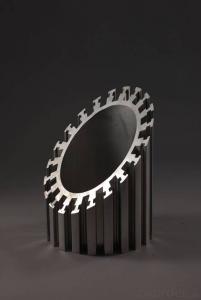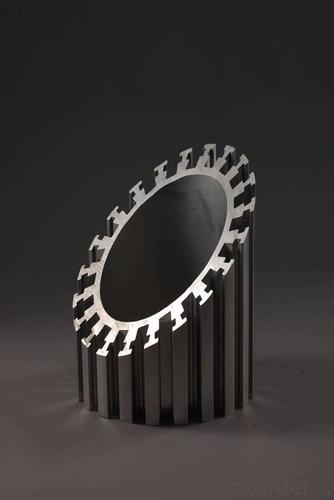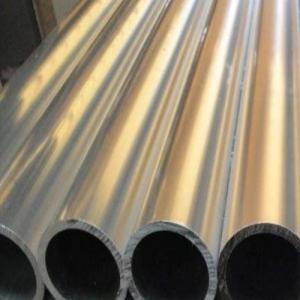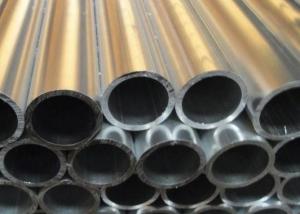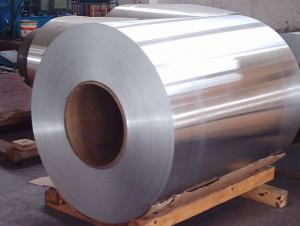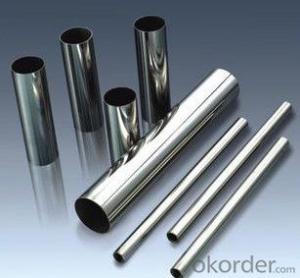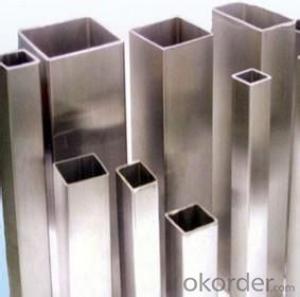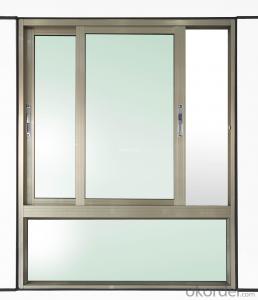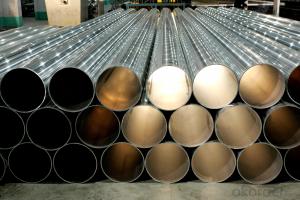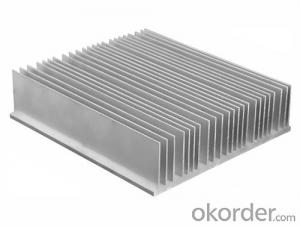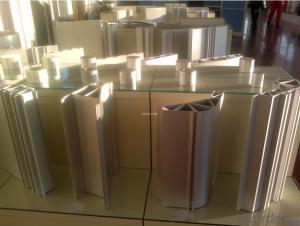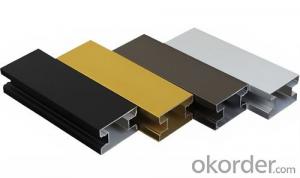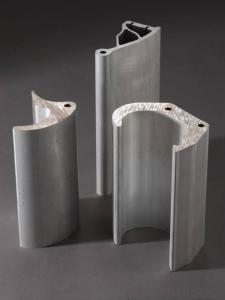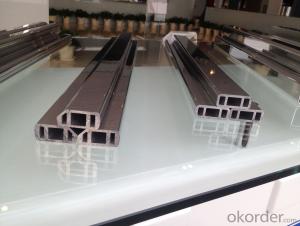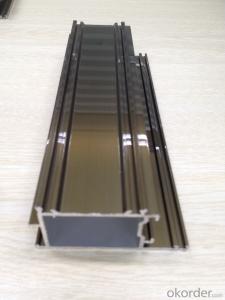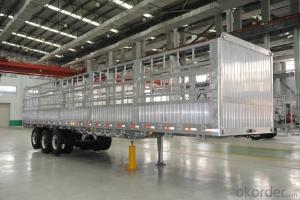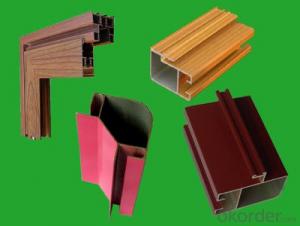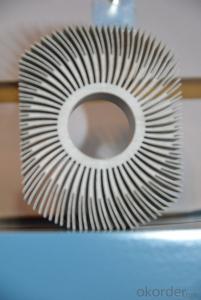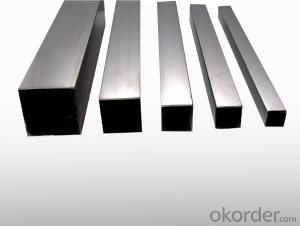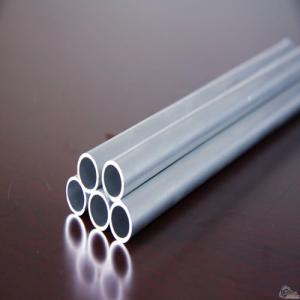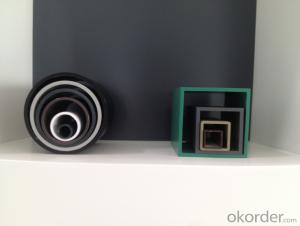Industry Aluminum Profiles for Aluminum Pipes
OKorder Service Pledge
OKorder Financial Service
You Might Also Like
We are the largest aluminum profilemanufacture in
Material | Alloy Aluminum 6063,6061,6005,6082 or customer nominated |
Temper | T3, T4, T5, T6 and other |
Surface | Anodize, electrophoresis, powder coating, PVDF coating, etc. |
Colour | Any colour based on Standard Germany RAL Mark |
Length | Not more than 16 meters |
Good Package | Inner plastic film /outside carton/wooden pallets |
Payment Method | T/T, L/C, etc |
Delivery Time | Normally 2-4 weeks, Delivery time can be consulted. |
Press Machine | 500-12500 tons all together 93 press lines. |
Fabrication | 1. Furniture 2. Drilling; 3. Bending; 4. Cutting; 5. etc. |
Certificate | ISO/TS 16949,DNV,IRIS,CCS,AFA,etc. |
Dies | 1. Using our dies, no fee; |
2. Using customer drawing, opening dies, usually about 5~50 tons then the dies cost can be refunded. | |
3. Die cost is negotiable base on the order quantity | |
Capability | Annual output 800,000 tons |
- Q: What's the difference between 6061 tubes and 6063?
- in order to improve the cutting performance, adding lead and bismuth. In Mg2Si, the Mg/Si ratio is 1.73,
- Q: Why is the copper tube of AUX air conditioning aluminum tube?
- Copper tubes are often used as connecting pipes for air conditioners. Air conditioning aluminum tube is also a kind of non-ferrous metal pipe.
- Q: Which brands of refrigerator tubes are aluminium tubes and which ones are copper tubes?Ronshen, Meiling, Midea, Hisense, Haier, Hualing and so on, there are some other.
- Hello! At present, the refrigeration pipes in the refrigerator are made up of copper tubes, aluminum tubes and Bondi tubes, which can completely meet the normal use requirements of refrigerators.
- Q: What is the cost of aluminum pipes compared to other materials?
- The price of aluminum pipes can differ based on various factors like pipe size, thickness, and grade, as well as the current market situation. However, in general, aluminum pipes are usually more cost-effective when compared to materials such as stainless steel or copper. Aluminum, being a lightweight and abundant material, has lower production costs. It is easily accessible, which further contributes to its affordability. Moreover, manufacturing aluminum pipes requires fewer resources and energy compared to other metals, further driving down their cost. On the contrary, materials like stainless steel or copper are typically pricier due to their higher production costs and limited availability. The manufacturing of stainless steel pipes necessitates additional alloying elements and complex processes, thereby increasing their price. Copper pipes, highly regarded for their excellent heat conductivity, are also more expensive due to the higher cost of copper as a raw material. It is important to acknowledge that the precise cost comparison between aluminum pipes and other materials can vary depending on market conditions and specific project requirements. Therefore, it is advisable to consult suppliers or conduct thorough research to obtain accurate pricing information for the desired materials.
- Q: Can aluminum pipes be used for irrigation controllers?
- Yes, aluminum pipes can be used for irrigation controllers. Aluminum pipes are commonly used in irrigation systems due to their durability, lightweight nature, and resistance to corrosion. They can withstand the harsh outdoor elements and are less likely to break or leak compared to other pipe materials. Additionally, aluminum pipes can be easily manipulated and installed, making them a popular choice for irrigation controllers.
- Q: Can aluminum pipes be used for structural purposes?
- Certainly, aluminum pipes have the capability of being utilized for structural purposes. Due to its lightweight and corrosion-resistant nature, aluminum proves to be an appropriate material for a diverse array of applications, such as structural components. In sectors like construction, aerospace, automotive, and marine industries, where strength, durability, and weight are of utmost importance, aluminum pipes are commonly employed. Moreover, these pipes can be effortlessly shaped, welded, and machined in order to fulfill specific structural needs. Consequently, aluminum pipes present a cost-effective and adaptable solution for a multitude of structural applications.
- Q: The aluminum pipe in the fridge is leaking. What should I do to fill it up?
- With good brothers gluing, 1; polished by voile. 2; with good brothers glued on the line, remember a few times glue.
- Q: Can aluminum pipes be threaded?
- Aluminum pipes, indeed, have the capability to be threaded. Due to its versatility, aluminum proves to be a material that can undergo machining and threading with ease. To accomplish this, the threading process entails carving helical grooves onto the pipe's exterior surface, enabling connection with other pipes or fittings. For accurate and precise threading, the utilization of suitable tools, such as a threading die, becomes imperative. However, it is crucial to acknowledge that aluminum, being a softer metal in comparison to materials like steel, demands caution to prevent excessive force or damage while threading.
- Q: Are aluminum pipes suitable for high-speed train tracks?
- Yes, aluminum pipes can be suitable for high-speed train tracks depending on the specific requirements and conditions of the track. Aluminum offers several advantages that make it a viable option for high-speed train tracks. Firstly, aluminum is lightweight yet strong, which is crucial for minimizing the weight of the track structure while maintaining the required strength. This is especially important for high-speed trains as they generate significant forces and vibrations, and a lighter track structure can help reduce wear and tear on the train and improve overall efficiency. Secondly, aluminum has excellent corrosion resistance properties. Train tracks are exposed to various environmental factors such as rain, humidity, and temperature fluctuations. Aluminum's resistance to corrosion ensures that the track remains durable and maintains its structural integrity over time. Additionally, aluminum is highly recyclable, making it an environmentally friendly choice. The use of aluminum pipes in train tracks promotes sustainability and reduces the carbon footprint associated with the construction and maintenance of the tracks. However, it is important to consider some limitations of aluminum for high-speed train tracks. Aluminum has a lower modulus of elasticity compared to steel, which means it may deform more under heavy loads. Therefore, proper design and engineering considerations need to be taken to ensure the stability and safety of the track. Moreover, the cost of aluminum can be higher compared to traditional materials like steel. This cost factor needs to be carefully evaluated when considering aluminum for high-speed train tracks. In conclusion, aluminum pipes can be suitable for high-speed train tracks due to their lightweight, strength, corrosion resistance, and recyclability. However, careful engineering and cost analysis should be conducted to ensure their feasibility and safety for specific track requirements.
- Q: Who knows the grease on the aluminium tube cleaning method
- Cleaning aluminum grease is some trouble, because in addition to grease is generally alkaline solution, such as oxygen net, but alkaline water and pure aluminum easy reaction, not suitable for all.
Send your message to us
Industry Aluminum Profiles for Aluminum Pipes
OKorder Service Pledge
OKorder Financial Service
Similar products
Hot products
Hot Searches
Related keywords
